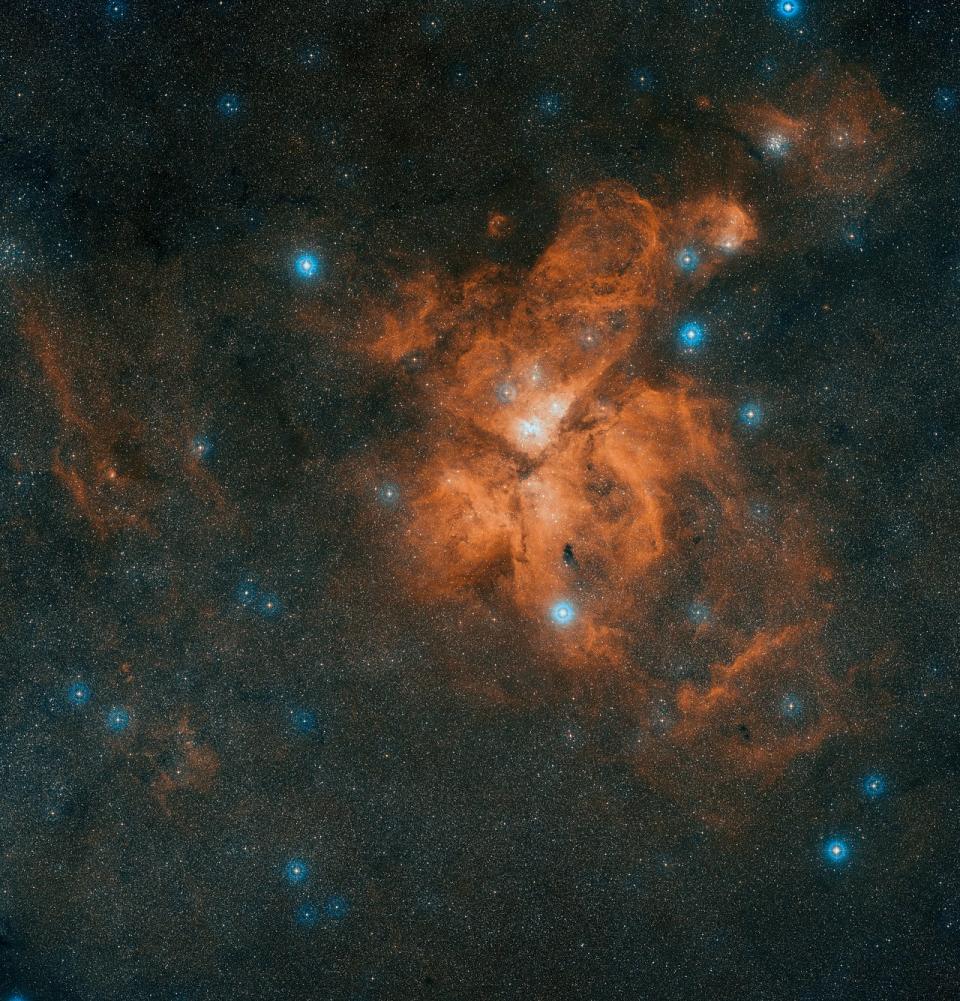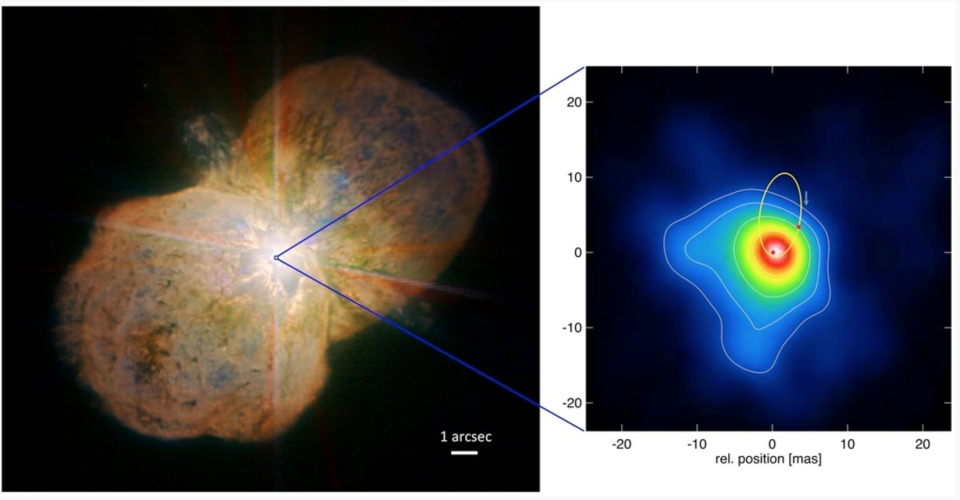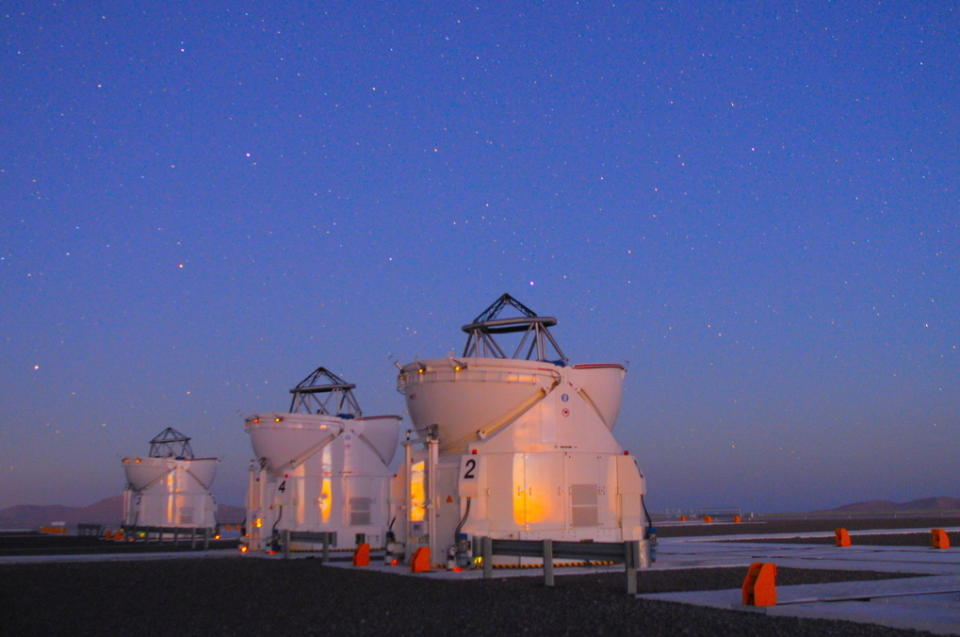Two of the Largest Stars in the Galaxy Are Lashing Each Other With Stellar Wind

About 7,500 light-years away in the Milky Way, raging stellar winds are ripping plasma from two stars in orbit around each other, and between these massive stars, the 10-million-kilometer-per-hour winds collide in one of the most active and volatile regions of the galaxy. One of the two stars in the binary system is among the largest and most luminous stars known, and the other is smaller but hotter, also incredibly luminous, and some 30 to 80 times the mass of the sun.
We don't have exact figures for these two stars just yet because the intense energy from the colliding stellar winds caused the larger star to eject an incredible amount of gas and dust in a short time-an event observed in the 1830s and known as the "Great Eruption." The gas and debris formed the Homunculus Nebula, and it obscures our view of the colossal binary star system within. But now we have found a way to peer through it.

Eta Carinae, as the binary system is called, was recently imaged by a team of international astronomers in greater detail than ever before, including the relatively small region between the two stars where the stellar winds collide. They found that the violent winds of the hotter star colliding with denser winds from the bigger star cause temperatures to reach many tens of millions of degrees, hot enough to emit X-ray radiation.

The research team, led by Gerd Weigelt from the Max Planck Institute for Radio Astronomy in Germany, used a new imaging technique involving three of the four telescopes that make up the European Southern Observatory's Very Large Telescope (VLT). Infrared light absorbed by all three telescopes was compiled into a complete image using image reconstructing software-a technique known as interferometry-producing an image with ten times higher resolution than one of the individual VLT units could achieve.
This technique-which uses our advances in computing to compile data from multiple telescopes, and fill in the gaps-is a clever trick to overcome the boundaries of having to construct ever-larger mirrors to achieve higher resolution. Using interferometry, observations taken in hundreds of different wavelengths can be constructed into a clearer picture than ever before.

"Our dreams came true, because we can now get extremely sharp images in the infrared regime," Gerd Weigelt, lead author of a paper published in Astronomy & Astrophysics, said in a press release. "The ESO VLT interferometer provides us with a unique opportunity to improve our physical understanding of Eta Carinae and many other key objects."
"It is clear that infrared interferometry will revolutionize infrared astronomy," adds Weigelt's colleague Karl-Heinz Hofmann.
Now that we have used this powerful new tool to peer into the heart of a violent chaos where two of the galaxies biggest stars lash each other with stellar wind, the only question is, what will we point it at next?
You Might Also Like

